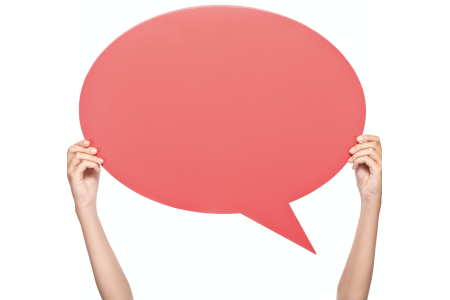To write like you talk, read your copy aloud
When Don Murray arrived in the newsroom for his first day on the job as writing coach for the Boston Globe, he turned to his new boss and said: “I can tell you who your three best writers are.”

Then the Pulitzer Prize winner and author of Writing to Deadline: The Journalist at Work proceeded to do just that.
“How did you know?” the editor asked.
“Their lips move when they write,” Murray said.
Reading your copy aloud — hearing your words instead of just staring at them — is one of the techniques that separates master writers from the might-have-beens.
“The ear is the only true writer and the only true reader,” said poet Robert Frost.
Do your lips move when you write?
Why a conversational voice?
You learned formal writing in high school. But to get your target audience to pay attention, your content marketing pieces, social media and blog posts, and other business writing should use a conversational style, instead. To write conversationally, worry less about being grammatically correct and more about how the writing makes your readers feel.
What goes into a conversational tone in writing? Everything from the way you start a sentence to whether you write in passive or active voice. (The Hemingway App can help with that, by the way.)
Benefits of reading aloud
Specifically, it will help you:
1. Reduce errors.
Your eyes are such good editors, they can “fix” your copy as they view it. Your ears will catch what your eyes miss.
Students taking remedial writing courses at the City University of New York, for instance, eliminated 60% of their grammatical errors by reading their copy aloud, according to Richard Andersen, author of Writing That Works.
2. Make your copy conversational.
“Effective writing has the illusion of speech without its bad habits. The reader hears a writer speaking to a reader. The writing should flow with grace, pace and clarity — not the way we speak but, better than that, the way we should speak.”
— Donald M. Murray, Pulitzer Prize-winning journalist and author of Writing to Deadline
We want our copy to sound the way we do when we speak — not like some computer spit it out. Take this sounds-the-way-you-speak passage by Warren Buffett, chairman of Berkshire Hathaway, calling attention to a great bottom line in this letter to shareholders:
“Below is the tally on our underwriting and float for each major sector of insurance. Enjoy the view, because you won’t soon see another like it.”
3. Make your copy sound better.
Reading aloud can smooth out rough passages, reduce fits and starts, and otherwise make your copy flow instead of stutter. It can help you find a voice and tone for your piece.
“Effective writing has the illusion of speech without its bad habits,” Murray writes. “The reader hears a writer speaking to a reader. The writing should flow with grace, pace and clarity — not the way we speak but, better than that, the way we should speak.”
4. Cut Through the Clutter.
When you read your copy aloud, your tongue will trip over nine-syllable words; you’ll run out of breath before the ends of long sentences; you’ll stumble over redundancies, jargon and passive voice.
In short, you’ll find all the things you’ve been looking for — but missed — thus far in your editing process.
Run the ‘Hey, did you hear?’ test.
Having trouble nailing that “business casual” tone you’re aiming for? Try reading your message aloud — after a friendly greeting or phrase:

I call this the “Hey, did you hear?” test. If your business writing sounds like the adults in a Charlie Brown special — “Wah Wah Wah Wah” — after a simple greeting or phrase, chances are, your copy is too stiff, bureaucratic and jargon-filled.
Plus: Your tongue will trip over stuffy, overblown phrases. You’ll stumble over stiff, bureaucratic words. You’ll catch other issues that reduce readability.
You might also run the Elevator Test on your copy: Imagine riding from the first floor to the third floor with your favorite colleague. What, she asks, have you been doing? What do you say? That’s your lead. Corollary: If you can’t imagine saying this in an elevator, don’t put it on the page.
Then there’s the Bar Test. You ever gonna say this on a bar stool? No? Fix it.
Still having trouble? Try leaving yourself a voice message. That will help you capture your conversational voice.
Now ear this.
“When I started reading my stories aloud for a living and I’d hear myself, I would think, ‘Good heavens, that needs to be pointed up,’ or ‘That should be out.’ Now, as I go to colleges to do readings, I have revised a lot of my early stories so that they read more succinctly. I wish I had learned early on what a good test reading aloud was.”
— Eudora Welty, American author
Find a private place and read your copy aloud. When you identify passages that need help, talk them out until you hear something that works better.
Your readers will thank you for it.
Learn more about conversational tone in writing.
Do you read your copy aloud? If so, how does that help?

Leave a Reply